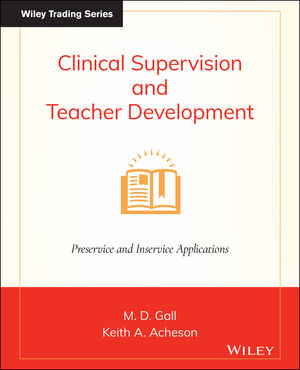|
Textbook
Clinical Supervision and Teacher Development, 6th EditionISBN: 978-0-470-38624-8
Paperback
272 pages
October 2010, ©2011
 |
||||||
Each chapter is updated to include new initiatives and methods that
are relevant to clinical supervision: the No Child Left
Behind (NCLB) Act; the accountability movement in
education; policy initiatives to judge teachers’
effectiveness based on their students’ gains on standardised
achievement tests; data-based teaching; tutoring as a teaching
method for struggling students; school-level factors that affect
teaching, learning, and supervision; the widget effect in teacher
evaluation; nonverbal communication; intercultural communication;
and communication accommodation theory.
- Chapter 4 is new to this edition. It relates clinical supervision to other methods of professional development: action research, classroom walk-throughs, cognitive coaching, instructional rounds, lesson study, microteaching, peer coaching, peer consultation, and professional learning communities. These methods gradually have come into professional use independently of each other and independently of clinical supervision. The authors analyze similarities and differences between these methods and explain how various techniques of clinical supervision can be incorporated into these methods to strengthen them.
- Chapter 6 is also new to this edition. It examines problems of practice in clinical supervision. The authors wanted to highlight the fact that clinical supervision is generally beneficial, but it can break down or be problematic in certain situations. The authors focus on five problems of practice: teachers who have conflicting priorities; teachers who have difficulty translating insights into action; teachers who avoid contact with their supervisor; incompatibilities between student teachers and cooperating teachers; and experienced teachers who get in a rut.
- Several new observation techniques have been added to Unit Four: NCLB report cards; Surveys of Enacted Curriculum and other methods of determining a teacher’s curriculum alignment; the Patterns of Adaptive Learning Scales to determine students’ cognitive and emotional engagement in classroom activities; and teacher evaluation scales.
- Throughout the text, the authors describe recent research studies whose findings are advancing educators’ understanding of factors that enhance the effectiveness of clinical supervision and classroom instruction.



